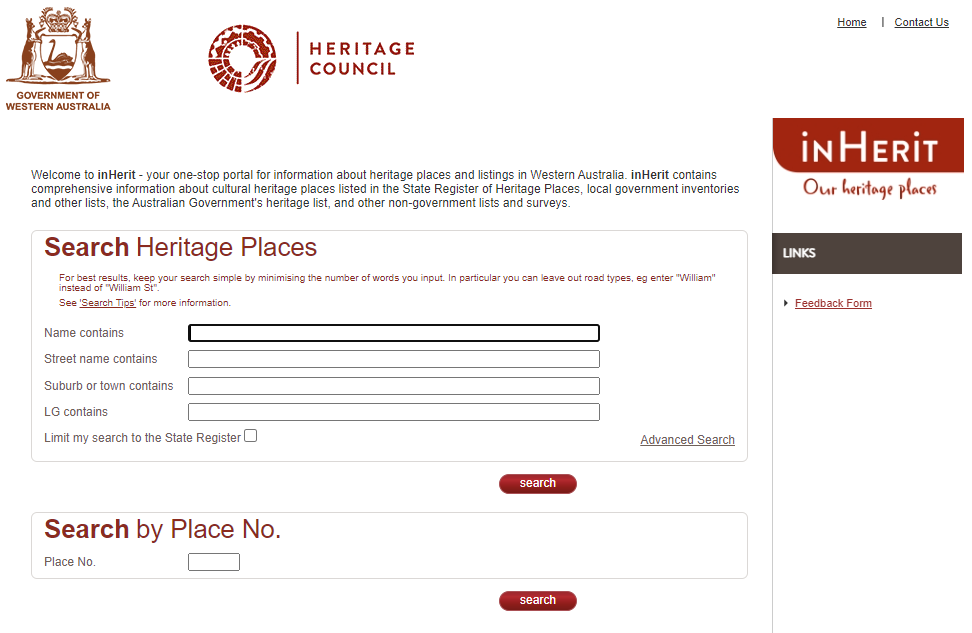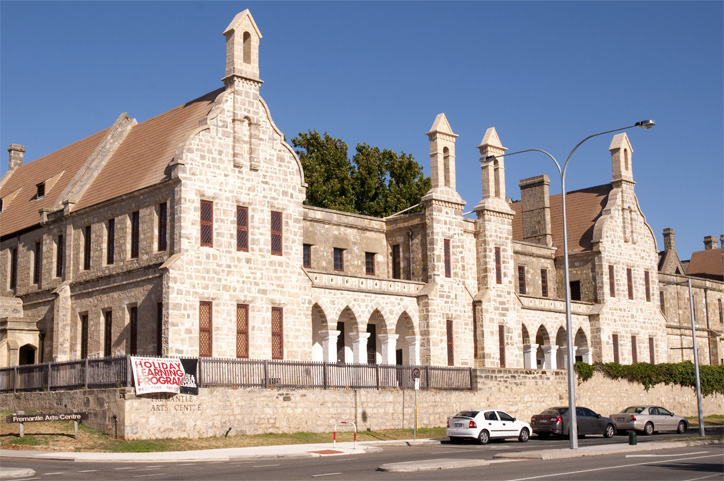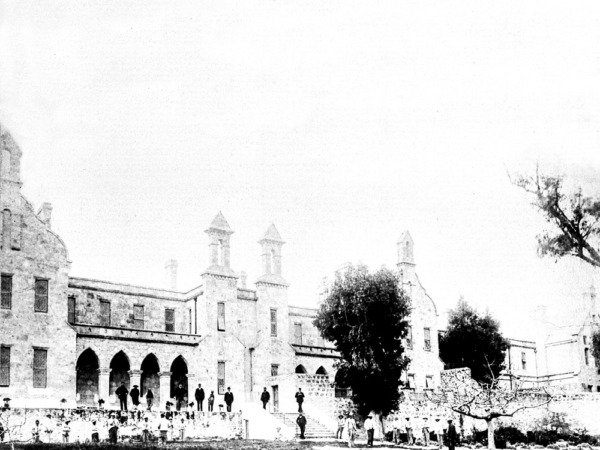Western Australia encompasses an array of natural, cultural, and historical heritage places. Heritage is the cultivation and conservation of important tangible and intangible things from the past that portray our State’s history and bring value to current and future generations (Heritage Perth, 2024). In Western Australia, non-Aboriginal, culturally significant Heritage is identified and protected by the WA Heritage Act 2018 (the Act).
Under the Act, culturally significant Heritage comprises at least one HERCON factor. These HERCON factors include the aesthetic, historical, scientific, social, and spiritual values of a place (Heritage Council, 2022a). The HERCON factors are a nationally agreed and applied approach, ensuring a standard measure of heritage assessment across Australia (The Parliament of the Commonwealth of Australia, 2001).
This Insight outlines how the WA Heritage Act 2018 identifies, protects, and documents non-Aboriginal, cultural heritage in Western Australia, how this heritage information is accessed, and provides examples of local and state non-Aboriginal cultural heritage.
How the Heritage Act 2018 works
The Act defines three key entities with functions, powers and responsibilities for the protection of non-Aboriginal Heritage:
- The Heritage Council – the State Government’s statutory advisory body (Figure 1). Whose key functions are to establish strategies, policies, to make decisions relating to the State Register, and provide independent advice to the Minister for Heritage. The council consists of nine members appointed by the Minister (Heritage Council, 2021c);
- The Department of Planning, Lands and Heritage (DPLH) – the government department that administers the Act. Whose key function is to support the Heritage Council through administration and carrying out operations, projects and services, and to support the Minister for Heritage (Heritage Council, 2021c), and
- Local Governments whose key decision for planning and development are vital to the conservation and management of heritage places. Under the Act, local governments are required to identify and protect places of cultural heritage significance conducting local heritage surveys (LHS) with support from the DPLH (2019).
These three authorities are responsible for the identification, protection and sensitive development of Western Australia’s cultural heritage places. Identifying and recording cultural heritage is achieved by three methods: the State Register of Heritage Places, Local Heritage Surveys, and Local Government Heritage Lists.

State Register of Heritage Places
The State Register is a statutory list of places with State cultural heritage significance (Heritage Council, 2019b). An organisation, local government, or a member of the public can nominate a place to enter the Register. When assessing nomination for inclusion in the State Register, the Heritage Council considered factors such as cultural, social or spiritual associations, representation of important characteristics, creative achievement and the potential to yield information about the State’s evolutionary history (Heritage Council, 2019b).
Once places are entered in the State Register, they are available online and accessible in the inHerit online Historic Heritage Places database, providing a centralised and accessible resource for heritage data within Western Australia (Heritage Council, 2022a). The site can be accessed via this link: https://inherit.dplh.wa.gov.au/Public.

Alternatively, the State Register and other heritage values can be accessed the:
- GeoHeritage on GeoVIEW WA
- Spatial MapViewer showing Heritage on the DPLH site
- Local government LHS heritage lists are available on their website
- Data.wa.gov.au layer Heritage Council WA – State Register (DPLH-006)
If the State or a Company wishes to undertake works or modify a Heritage place included in the State Register it must be referred as a development proposal to the Heritage Council for assessment. These plans will be considered by the Heritage Council and passed on to the WA Planning Commission or the local government for the assessment, which must be consistent with the advice from the Heritage Council (Heritage Council, 2019a).
The Fremantle Museum and Arts Centre is one of Fremantle’s most significant landmarks and a recognised place on the City of Fremantle heritage list and the State Heritage Register. It is valued for its historical reflection of early social and political life in the 1870s as an asylum for the criminally insane (Figure 3) and later as headquarters for the US forces in WWII (NTWA, 2023). Its imposing Victorian Gothic architecture and convict-built structures represent Fremantle’s history, architectural heritage and recognisable streetscape (Figure 4) (City of Fremantle, 2024).

(Source: Photo Stuart Sevastos CC by 2.0)

(Source: Fremantle Arts Centre)
Local Heritage Survey
Under the Heritage Act 2018, Local Governments are required to compile and maintain a Local Heritage Survey (LHS) of places that may be of local cultural heritage significance to establish the cultural heritage values of the district. The LHS process is supported by the DPLH through guidelines, policies, and resources (DPLH, 2019). These include:
- Guidelines for Local Heritage Surveys
- Guidelines for Assessment of Local Heritage Places
- Guidelines for State Government Heritage
The HERCON factors used by local governments to assess the cultural Heritage of a place include:
- Aesthetic – exhibits particularly visually appealing characteristics that are valued by the community.
- Historic – conveys the evolutionary pattern of the history of the State and the history of the locality through an event or phase.
- Scientific – can harbour information to contribute to understanding the locality’s earlier construction and design techniques.
- Social – is significant with a cultural group or community and contributes to a sense of place and identity.
- Spiritual – entails the intangible values of art, knowledge, and practices of a cultural group. (Heritage Council, 2022a)
Inclusion and exclusion criteria for the HERCON factors are outlined in the Guidelines for Assessment of Local Heritage Places.
Once a place has been considered to have cultural heritage value, its level of significance is classified according to how rare or common the value is, its importance, the contribution to the State and worth to the community (Table 1).
| Level of Significance to the Local Area | Classification | Description |
|---|---|---|
| Exceptional | Category 1 | Essential to the Heritage of the locality. Rare or outstanding example. All places included in heritage list. |
| Considerable | Category 2 | Very important to the Heritage of the locality. All places included in heritage list. |
| Some/moderate | Category 3 | Contributes to the Heritage of the locality. Places may be included in the heritage list. |
| Little | Category 4 | Has elements or values worth noting for community interest but otherwise makes little contribution. Below the threshold for the heritage list. |
Places can include a residence, a dining establishment, churches, and industrial sites. An example of a LHS conducted is the City of Swan’s Local Heritage Survey 2022. It classified the residential property Cora Lynn (Figure 5) as category 1, having exceptional significance to the heritage in Guildford. The property exhibits the aesthetic characteristics of a Federation Queen Anne-style residence and contributes to the historic character and development of the locality (City of Swan, 2022).

From Houses for Sale, by The Agency, 2024 ((https://theagency.com.au/property-house-wa-guildford-45729).
Copyright 2024 by The Agency.
Local Government Heritage Lists
Places classified as categories 1 and 2 during an LHS are included in the respective local governments’ Heritage List and have statutory protection under the Planning Development Regulations (Local Planning Scheme) 2015 (City of Swan, 2023). The City of Perth’s Heritage List includes buildings, statues, trees, sewerage vents, electrical sub-stations, tram stop poles, bridges, parklands, Jacobs Ladder, and cemeteries (City of Perth, 2023).
Local planning schemes are the local government’s provisions for development and land use (DPLH, 2024). The Planning Development (Local Planning Scheme) Regulations 2015 require local governments to establish and maintain heritage lists, which acknowledge and protect heritage places under the Scheme and Local Planning Policies (LPP) (Heritage Council, 2021a). LPPs are devised to conserve, protect, and ensure developments and subdivisions do not negatively impact places of heritage significance (Town of Bassendean, 2023).
Under the Heritage Act 2018, a heritage list established or maintained under a Scheme establishes a process that restricts and requires approvals for the development of a heritage place. The Act also outlines management requirements of a heritage property, penalties for offences, and the requirements for ongoing conservation and maintenance of a place under the heritage agreement (Heritage Council, 2021b), which are upheld through the operations of the Minister for Heritage, the Council and the DPLH.
Development approval for works on a heritage place is not required for general maintenance and minor works, including repainting with the original colour scheme, cleaning gutters, low-pressure and non-abrasive cleaning and replacing fittings with alike materials (Heritage Council, 2019a). However, proposed modifications to a locally listed heritage place, including demolition, renovations, or change of land use, require development approval from the local government (City of Swan, 2024).
Assistance for Heritage Values Protection
There are a range of incentives available for the conservation and protection of heritage places. For places listed on the State Register, the Heritage Council offers the Heritage Grants program under two streams. The State Heritage Grants, which subsidises the cost of conserving a State Registered Place, and the Community Heritage Grants, which subsidises activities and projects that celebrate a State Registered Place, a place in the Heritage Council’s assessment program, or a group of local heritage places (DPLH, 2023), while Local Heritage Values can obtain assistance through local governments. Local governments have their own program under the Heritage Assistance Fund of the Act, allowing owners and leaseholders to apply for financial assistance through grants (typically matched funding) and/or discounted rate fees (City of Vincent, 2016)
Our team at Integrate Sustainability has a wealth of knowledge relating to heritage matters in Western Australia, and experience with conversing with local governments. To find out if your property or business is heritage listed, your eligibility for financial assistance for works, or to assist in the management or operations of preserving heritage places, please get in touch with us via phone on 08 9468 0338 or email enquiries@integratesustainability.com.au.
References
City of Fremantle. (2024). Arts and Culture: Heritage Sites. Retrieved from City of Fremantle: https://www.fremantle.wa.gov.au/arts-culture/heritage-sites
City of Perth. (2023, June 14). Heritage List. City of Perth- City Planning Scheme No2- Planning Policy Manual- Part 1. Retrieved from https://rgcopcorpweb103-cdn-endpoint.azureedge.net/-/media/Project/COP/COP/COP/Documents-and-Forms/Develop/Documents/Planning-Framework/CPS-2-Registers-and-Lists/24111-24–Heritage-List—July-2023—CPS-2.pdf?rev=324adf2a6de3420aa496a9ad3ad97d93
City of Swan. (2022). City of Swan Heritage List. Retrieved from https://www.swan.wa.gov.au/awcontent/Web/Documents/Services%20and%20Community/Online%20services/Rates/City-of-Swan-Heritage-List-2022.pdf
City of Swan. (2023). Local Heritage Survey Review. Retrieved from Swan Engage: https://swanengage.swan.wa.gov.au/heritagesurvey
City of Swan. (2024). Heritage Local Planning Policy. Retrieved from https://swanengage.swan.wa.gov.au/heritage-local-planning-policy
City of Vincent. (2016). Heritage assistance fund. Retrieved from City of Vincent: https://www.vincent.wa.gov.au/Profiles/vincent/Assets/ClientData/Policy___Place/No__7_6_9_Heritage_Assistance_Fund_Adopted_5_April_2016_FINAL_-_Copy.pdf
DPLH. (2019). Heritage Act 2018 – Frequently Asked Questions. Retrieved from https://walga.asn.au/getattachment/Policy-Advice-and-Advocacy/People-and-Place/Heritage/20190401-Heritage-Act-2018-FAQs.pdf?lang=en-AU
DPLH. (2023). Heritage grants program. Retrieved from Government of Western Australia: https://www.wa.gov.au/government/document-collections/heritage-grants-program
DPLH. (2024). Local Planning Strategies, Schemes and Structure Plans. Retrieved from Government of Western Australia: https://www.wa.gov.au/organisation/department-of-planning-lands-and-heritage/local-planning-strategies-schemes-and-structure-plans#:~:text=Local%20planning%20schemes%20set%20out,within%20the%20local%20government%20area.
Government of Western Australia. (2018). Heritage Act 2018. Retrieved from https://www.legislation.wa.gov.au/legislation/prod/filestore.nsf/FileURL/mrdoc_41326.pdf/$FILE/Heritage%20Act%202018%20-%20%5B00-a0-00%5D.pdf?OpenElement
Heritage Council. (2019a). Guide to Developing Heritage Places. Retrieved from https://www.wa.gov.au/system/files/2021-04/HER-GuideToDevelopingHeritagePlaces-2019.pdf
Heritage Council. (2019b). State Register of Heritage Places. Retrieved from https://www.wa.gov.au/system/files/2021-12/HH-State-Register-of-Heritage-Places-2019.pdf
Heritage Council. (2021a). Guidelines for Establishing a Heritage List. Retrieved from https://www.wa.gov.au/system/files/2022-03/Guidelines-for-establishing-a-heritage-list-mar2021.pdf
Heritage Council. (2021b). Guidelines for State Government Heritage: Consultation Draft. Retrieved from https://www.dplh.wa.gov.au/DepartmentofPlanningLandsHeritage/media/Documents/Fileshare/Guidelines-for-State-Government-Heritage-Consultation-Draft.pdf
Heritage Council. (2021c). An Overview. Retrieved from https://www.wa.gov.au/system/files/2021-05/HER-Heritage-Overview-Brochure-A4-2019.pdf
Heritage Council. (2022a, November). Guidelines for Assessment of Local Heritage Places. Retrieved from https://www.wa.gov.au/system/files/2022-12/HER-GL-Guidelines-for-the-assessment-of-Local-Heritage-Places.pdf
Heritage Perth. (2024). Learning and Discovery: about. Retrieved from Heritage Perth: https://learning.heritageperth.com.au/about
NTWA. (2023). Museum and Arts Centre, Fremantle. Retrieved from inHerit: Our Heritage Places: https://inherit.dplh.wa.gov.au/Public/Inventory/Details/f8e553ec-4921-4218-a713-6f808d4c4a10
The Parliament of the Commonwealth of Australia. (2001). Environment and Heritage Legislation Amendment Bill (No. 2). Parliament of Australia.
Town of Bassendean. (2023). Local Planning Policy No. 4 – Heritage and Character. Retrieved from https://www.bassendean.wa.gov.au/documents/1095/heritage-and-character-(lpp4)

